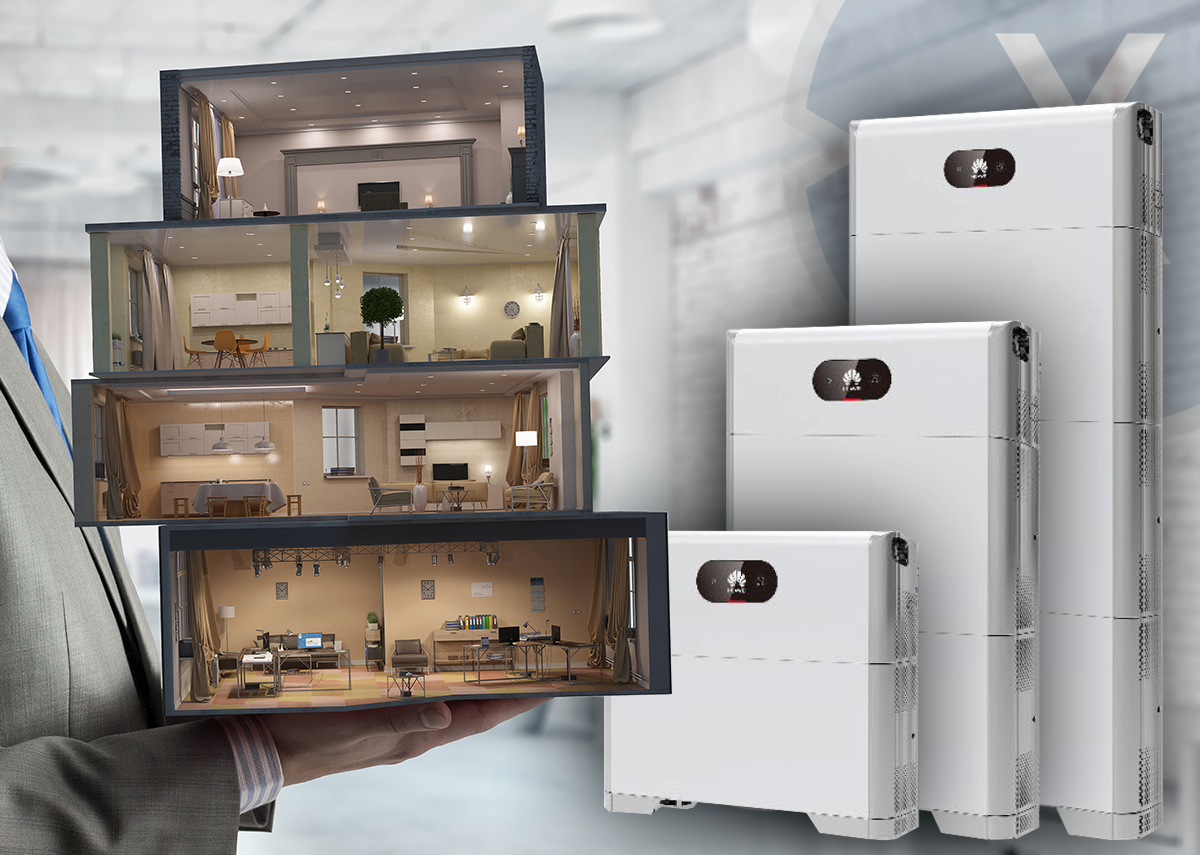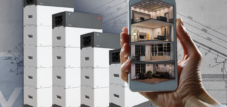
The storage solution for energy storage at home – Image: Xpert.Digital / Sergey Nivens|Shutterstock.com
Functionality of the electricity storage
There are now numerous electricity storage providers who offer different systems. Choosing the right energy storage device depends on several factors, such as the size of the house, the electricity consumption and the connections that are available.
The future of the energy industry will be autonomous and networked power supply. A number of manufacturers have already recognized this and are now offering a variety of power storage devices that have various functions.
Some of these memories are intended exclusively for autonomous power supply. They have a fixed capacity and cannot be expanded. Others, however, are extremely flexible and can be adjusted in size and capacity as desired.
Another difference is whether the energy storage device is operated with or without a mains connection. However, most power storage units are equipped with a mains connection so that you can continue to use the energy even if the power network fails.
Xpert power storage shop
Advantages of electricity storage
Power storage can do a lot to improve autonomous power supply. On the one hand, you can use it to store your own solar or wind energy systems and thus reduce your household's electricity requirements. On the other hand, you can also use the electricity storage system to cover your household's electricity needs on days with high electricity demand. This is particularly advantageous when public networks are overloaded and the price of electricity rises.
The future of energy use will be autonomous power supply based on electricity storage. This technology is already available today and will be used more and more frequently in the future.
Electricity storage makes it possible to store the energy generated and make it available reliably later. This has the advantage that you become less dependent on sometimes unsteady energy suppliers and can optimize your own power supply.
The price of electricity will continue to rise in the future. By using electricity storage, you can counteract this trend and reduce the costs of your own power supply.
Electricity storage systems are an excellent complement to photovoltaic systems.
Suitable for:
The new generation of electricity storage is revolutionizing the electricity market
The new generation of electricity storage is smaller, cheaper and more powerful than its predecessors. These innovations will revolutionize the energy market and fundamentally change the way we consume and generate our electricity.
New developments in electricity storage include lithium-ion batteries, which are now used in many households and companies. These batteries are much smaller and lighter than conventional lead batteries and have a significantly higher energy density. This means they can store more electricity while taking up less weight and space.
Lithium-ion batteries are also much cheaper to produce than lead-acid batteries. Lithium-ion battery prices have fallen sharply in recent years as the technology continues to improve. Experts expect prices to continue to fall, meaning lithium-ion batteries will become increasingly attractive to consumers and businesses.
The improved technology of lithium-ion batteries has also led to an increasing demand for these batteries. In recent years, more and more electric vehicles powered by lithium-ion batteries have been sold. More and more companies are also relying on lithium-ion batteries to cover their electricity needs. This is particularly the case if they do not have access to a regular power grid or their power grid is unreliable.
However, lithium-ion batteries are not the only new developments in electricity storage. There are also a number of other new technologies that could revolutionize the energy market. These include redox flow batteries, supercapacitors and powerwalls.
Redoxflow batteries are a further development of lithium-ion batteries. They have an even higher energy density and can therefore store even more electricity. The service life of redox flow batteries is also longer than that of lithium-ion batteries. This means that they last longer and are therefore cheaper to purchase.
Supercapacitors are another new technology in electricity storage. They have a very high energy density and can therefore store a lot of electricity. The lifespan of supercapacitors is also very long, which means that they last longer and are therefore cheaper to purchase.
Powerwalls are another new technology in electricity storage. Powerwalls are batteries that are mounted on the wall and therefore save space. Powerwalls have a high energy density and can therefore store a lot of electricity.
HUAWEI LUNA 2000 is one of the market leaders for flexible, modular and expandable power storage devices at any time
General technical data for all HUAWEI power storage LUNA2000
Rated voltage (1-phase WR/L1): 450 V
Operating voltage range (1-phase WR/L1): 350-560 V
Rated voltage (3-phase WR/M1): 600 V
Operating voltage range (3-phase WR/M1): 600- 980 B
Display: SOC status LED, status LED
Communication: RS485 / CAN (only in parallel operation)
Power module dimensions (W*D*H): 670 x 150 x 240 mm
Power module weight: 12 kg
Battery module dimensions (W*D*H): 670 x 150 x 360 mm
Battery module weight: 50 kg *1
Location: Indoor/Outdoor
Installation: Stand (Standard), Wall Mount (Optional)
Operating temperature range: -20°C to +55°C *2
Max. operating altitude: 4000m (derating over 2000m)
Rel. humidity during operation: 5% to 95%
Cooling: Convection
Protection class: IP66
Noise emission: <29 dB
Cell technology: Lithium iron phosphate (LiFePO4)
Scalability: Parallel operation of max. 2 batteries
Certificates: RCM, CEC, VDE2510-50, IEC62619, IEC 60730, UN38.3
Compatible inverters:
- SUN2000-2/3/3.68/4/4.6/5/6KTL-L1
- SUN2000-3/4/5/6/8/10KTL-M0
- SUN2000-3/4/5/6/8/10KTL-M1
*1 The weight of the battery module depends on the actual product, with a tolerance of ±3%.
*2 Please note details in the valid warranty conditions.
All information and technical data as a PDF can be downloaded here for free
Storage solution LUNA2000-5-S0 - 5 kWh - Smart String ESS
Power module: LUNA2000-5KW-C0
Number of power modules: 1
Battery module: LUNA2000-5-E0
Battery module capacity: 5 kWh
Number of battery modules: 1
Usable energy of the battery: 5 kWh *1
Nominal discharge power: 2.5 kW
Maximum discharge power: 3.5 kW, 10 s
Dimensions (W*D*H): 670 x 150 x 600 mm
Weight (including stand): 63.8 kg
*1 Test conditions: 100% depth of discharge (DoD), 0.2C charge and discharge rate at 25℃, at start of life. If no PV modules are installed or the system has not received sunlight for at least 24 hours, the SOC at the end of the discharge will be at least 15%.
Energy storage LUNA2000-10-S0 - 10 kWh - Smart String ESS
Power module: LUNA2000-5KW-C0
Number of power modules: 1
Battery module: LUNA2000-5-E0
Battery module capacity: 5 kWh
Number of battery modules: 2
Usable energy of the battery: 10 kWh *1
Nominal discharge power: 5 kW
Maximum discharge power: 7 kW, 10 s
Dimensions (W*D*H): 670 x 150 x 960 mm
Weight (including stand): 113.8 kg
*1 Test conditions: 100% depth of discharge (DoD), 0.2C charge and discharge rate at 25℃, at start of life. If no PV modules are installed or the system has not received sunlight for at least 24 hours, the SOC at the end of the discharge will be at least 15%.
Power storage LUNA2000-15-S0 - 15 kWh - Smart String ESS
Power module: LUNA2000-5KW-C0
Number of power modules: 1
Battery module: LUNA2000-5-E0
Battery module capacity: 5 kWh
Number of battery modules: 3
Usable energy of the battery: 15 kWh *1
Nominal discharge power: 5 kW
Maximum discharge power: 7 kW, 10 s
Dimensions (W*D*H): 670 x 150 x 1,320 mm
Weight (including stand): 163.8 kg
*1 Test conditions: 100% depth of discharge (DoD), 0.2C charge and discharge rate at 25℃, at start of life. If no PV modules are installed or the system has not received sunlight for at least 24 hours, the SOC at the end of the discharge will be at least 15%.
- Plan photovoltaics for warehouses, commercial halls and industrial halls
- Industrial plant: Plan a photovoltaic open-air system or open-space system
- Plan solar systems with photovoltaic solutions for freight forwarding and contract logistics
- B2B solar systems and photovoltaic solutions & advice
With Xpert.Solar, your individual electricity storage advice for your photovoltaic system
I would be happy to serve as your personal advisor.
You can contact me by filling out the contact form below or simply call me on +49 89 89 674 804 (Munich) .
I'm looking forward to our joint project.
Xpert.Digital – Konrad Wolfenstein
Xpert.Digital is a hub for industry with a focus on digitalization, mechanical engineering, logistics/intralogistics and photovoltaics.
With our 360° business development solution, we support well-known companies from new business to after sales.
Market intelligence, smarketing, marketing automation, content development, PR, mail campaigns, personalized social media and lead nurturing are part of our digital tools.
You can find out more at: www.xpert.digital – www.xpert.solar – www.xpert.plus

